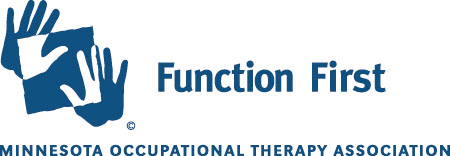|
Chronic Pain SIG - Graded Motor Imagery Part 1: The background, mechanisms and process
St. Catherine's University 2004 Randolph Avenue Saint Paul, MN 55105
Wednesday, February 21, 2018, 6:00 PM - 8:00 PM CDT
Category: SIGS
*Two Part Series on Graded Motor Imagery. You are welcome to attend one or both sessions. Part 2 is scheduled 3/21/18. Part 1 Agenda: Course Description:
Complex chronic pain conditions are often difficult to treat and can interfere with a variety of ADL/IADL, vocational, social, and other life tasks. In addition, people with persistent pain often have resulting secondary barriers as a result of disturbances to sleep, energy, mood, activity tolerance, ROM, memory, and various other factors. Research addressing “top down” approaches to pain treatment which utilize neuroplasticity to retrain the nervous system have increasing support in the literature and are an area for clinical practice development for OTs working in a variety of settings. Part 1 of this two part series will focus on the use of graded motor imagery (GMI) to treat complicated pain conditions. It will cover the basic physiology of central sensitization and how to identify it in your patients during your evaluation. We will also discuss how to know which patients would benefit most from GMI. The approach to using GMI techniques including pain neuroscience education, laterality/ left right discrimination, motor imagery/ visualization, sensory retraining, and mirror therapy will be taught in preparation for Part 2 coming 3-21-18 which will focus on the hands on lab and application to various diagnoses. A case study outlining application to phantom limb pain will also be presented. Complex chronic pain conditions are often difficult to treat and can interfere with a variety of ADL/IADL, vocational, social, and other life tasks. In addition, people with persistent pain often have resulting secondary barriers as a result of disturbances to sleep, energy, mood, activity tolerance, ROM, memory, and various other factors. Research addressing “top down” approaches to pain treatment which utilize neuroplasticity to retrain the nervous system have increasing support in the literature and are an area for clinical practice development for OTs working in a variety of settings. Part 1 of this two part series focused on the theory behind GMI and the didactic presentation of the stages. Part 2 will focus on applying GMI techniques including pain neuroscience education, laterality/ left right discrimination, motor imagery/ visualization, sensory retraining, and mirror therapy in a hands on lab session. Time will be dedicated to applying treatment interventions to a variety of diagnoses including complex regional pain syndrome, shoulder pain, low back pain, neuropathy, pre-amputation, and others of interest to the participants. Speaker Bio: Lindsay Marth, MA, OTR/L, TPS graduated from the University of MN with a BS in biology and completed her graduate work at St Catherine University (SCU) in 2008. After working in community mental health for 5 years, she joined the Minneapolis VA in 2013 to be part of a multi-disciplinary team hired to build their comprehensive pain center (CPC). She is currently working as a pain clinical specialist in the VA CPC and as assistant faculty for International Spine and Pain Institute (ISPI). She has completed her certification as a Therapeutic Pain Specialist through ISPI/EIM. Lindsay also serves as an adjunct professor at SCU, instructing in their weekend MAOT program. Lindsay is an AOTA and MOTA member and is involved in the MOTA Government Affairs Committee and OT for the Advancement of MN Mental Health Services (OTAMMHS).
Learning Objectives:
Through engagement in this educational session participants will be able to:
Target Audience: OTR, OTA, OTS. Course Level: Intermediate Event Location: Fee: MOTA members Free Non-members $20.00 Continuing Education Credits: 2.0 CEU This course fulfills the AOTA Classification Code for Continuing Education Activities: Category 1:Domain of OT and Category 2: Occupational Therapy Process Register Here - Part 1
Contact: Karen Carr- email: [email protected] |

 Prev Month
Prev Month View Month
View Month Search
Search Go to Month
Go to Month Next Month
Next Month Export Event
Export Event 